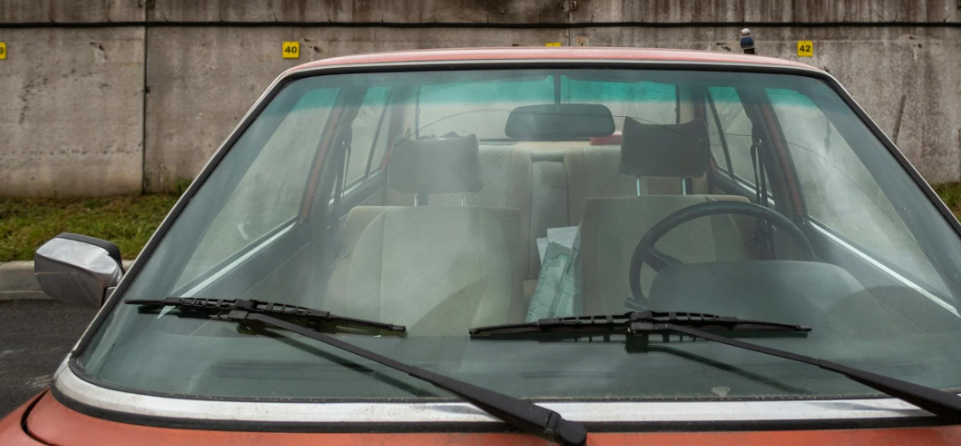Dealing with squeaky windscreen wiper blades can be particularly frustrating, especially during a rainy commute. Fortunately, this issue can be resolved with a few straightforward steps, ensuring a smoother and quieter driving experience.
Tips to Stop Windscreen Wipers from Squeaking:
1. Remove Dirt and Debris:
Wiper blades not only clear water but also collect dirt, dust, and other particles that accumulate on the windscreen. This build-up can cause the blades to squeak. Regularly cleaning your wiper blades can help mitigate this issue. Use hot soapy water or isopropyl alcohol with a paper towel to wipe the blades clean, changing the paper towel frequently. Alternatively, alcohol wet wipes are convenient and can be kept in your car for quick cleaning.
2. Clean the Windscreen:
Cleaning the wiper blades alone is insufficient if the windscreen remains dirty. Use an ammonia-free glass cleaner and a soft, lint-free cloth to clean the windscreen thoroughly, ensuring it is smooth and free from grime.
3. Check Washer Fluid Levels:
Ensure you have adequate washer fluid. A good washer fluid not only cleans the windscreen more effectively but also acts as a lubricant, reducing the chances of squeaking.
4. Adjust the Wiper Arms:
Wiper blades are designed to trail after the wiper arm, switching sides as the arms move across the windscreen. The blades should not dig into the windscreen or drag vertically. If they do, gently adjust the arms so the blade doesn’t sit flat on the glass. Be cautious, as only a slight adjustment is needed to avoid damaging the arm.
5. Soften the Blades:
New wiper blades may be stiff and require some time to break in, while old blades can harden due to exposure to the elements. To soften stiff blades, rub some alcohol on a paper towel and then rub it along the blade. This not only softens the blades but also cleans them.
6. Replace the Blades:
If the wiper blades are split, worn out, or excessively stiff, it is time to replace them. Replacing wiper blades is a simple process. Release the small clip or tab at one end of the arm, slide the old blade out, and insert the new one. Investing in high-quality blades is essential, as low-quality aftermarket blades can often be noisier than worn-out good quality ones.
By following these steps, you can effectively address and prevent squeaky windscreen wipers, ensuring a quieter and more pleasant driving experience during rainy weather.

Additional Considerations for Maintaining Wiper Blades:
Regular Inspection and Maintenance:
Regularly inspecting your wiper blades for signs of wear and tear can prevent squeaking before it starts. Look for cracks, splits, or any deformities in the rubber. It’s also a good idea to inspect the wiper arms themselves for any signs of rust or damage. By catching these issues early, you can replace or repair components before they become problematic.
Seasonal Adjustments:
Weather conditions can significantly impact the performance of your wiper blades. In colder months, ice and snow can cause blades to become stiff and brittle, leading to increased squeaking and reduced effectiveness. Consider using winter-specific wiper blades designed to handle harsh conditions. These blades are often made with more durable materials that can withstand freezing temperatures.
Proper Storage:
When not in use for extended periods, such as during the summer months, consider lifting the wiper blades off the windscreen or covering them to protect them from prolonged sun exposure. UV rays can degrade the rubber, leading to hardening and cracking. Proper storage can extend the life of your wiper blades and maintain their effectiveness.
Choosing the Right Blades:
Selecting the right type of wiper blades for your vehicle is crucial. There are various types of blades available, including conventional, beam, and hybrid blades. Each type has its own advantages and is suited for different weather conditions and windscreen shapes. Beam blades, for example, are designed to provide even pressure across the windscreen, making them effective in heavy rain. Researching and choosing the right blades can enhance their performance and reduce noise.
The Impact of Driving Conditions:
Driving in dusty or sandy environments can lead to a quicker accumulation of debris on your windscreen and wiper blades. In such conditions, it is beneficial to clean both the blades and windscreen more frequently. Additionally, using a high-quality washer fluid that contains cleaning agents can help in keeping the windscreen clear and reducing friction, thereby preventing squeaking.
FAQ
Windscreen wipers may continue to squeak even after cleaning due to several reasons. One common cause is the misalignment of the wiper arms. If the blades do not trail correctly, they can drag across the windscreen, creating noise. Additionally, worn or hardened rubber on the blades can cause squeaking. Environmental factors like extreme temperatures can harden the rubber, reducing its flexibility. Ensure the blades are properly aligned, and consider using a blade conditioner to soften the rubber. If these steps don’t work, replacing the blades with high-quality ones may be necessary.
It is generally recommended to replace windscreen wiper blades every six to twelve months, depending on your driving conditions and climate. In areas with harsh weather conditions, such as extreme heat or cold, wiper blades may need to be replaced more frequently. Regularly inspect the blades for signs of wear, such as cracks, splits, or stiffness. If the blades leave streaks, make noise, or do not effectively clear the windscreen, it’s time to replace them. Keeping a routine check on your wipers will ensure optimal performance and safety.
Choosing the right type of windscreen wiper blades depends on your vehicle and driving conditions. Conventional blades are suitable for general use, offering good performance in most weather conditions. Beam blades, which provide even pressure across the windscreen, are ideal for heavy rain and snow. Hybrid blades combine the benefits of both conventional and beam blades, offering durability and enhanced performance. Refer to your vehicle’s manual or consult with an automotive specialist to find the best fit. Ensure the blades are compatible with your windscreen’s curvature and your local climate.
While household cleaners can be effective, they are not always recommended for windscreen and wiper blade maintenance. Some household cleaners contain ammonia, which can damage the rubber on wiper blades and the protective coating on windscreens. It’s better to use cleaners specifically designed for automotive use. Ammonia-free glass cleaners and isopropyl alcohol are ideal choices. These products effectively clean without causing harm. Regular cleaning with appropriate products will maintain the clarity and longevity of both the windscreen and wiper blades, ensuring optimal performance and safety.
If your wiper blades continue to make noise despite following maintenance tips, it might be time for a replacement. Persistent noise can indicate that the blades are worn out or incompatible with your windscreen. Ensure the blades are the correct type and size for your vehicle. Sometimes, even high-quality blades can wear out due to environmental factors. If replacing the blades doesn’t resolve the issue, inspect the wiper arm mechanism for damage or misalignment. Consulting with a professional mechanic can help diagnose and fix the underlying problem, ensuring quiet and effective wiper operation.





